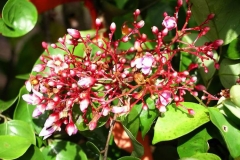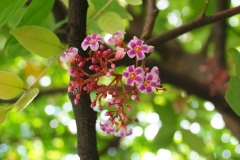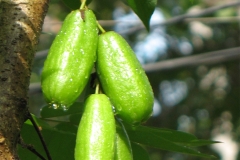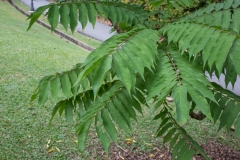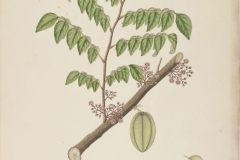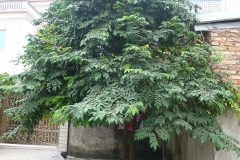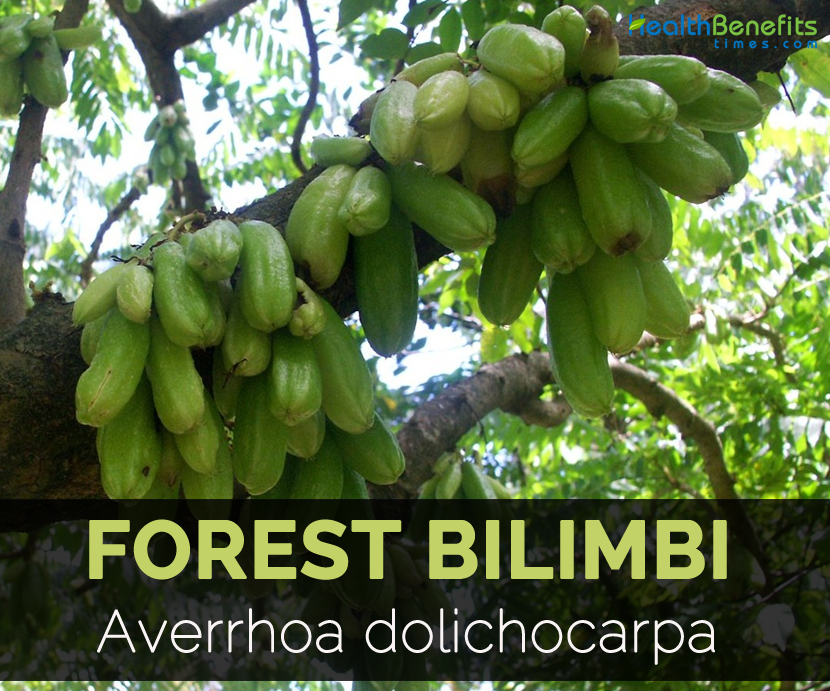 Forest Bilimbi with scientific name as Averrhoa dolichocarpa belongs to family Oxidaceae. It is also known as wild startfruit. The pollen shape is globose having three aperture or tricolpate. The pollen has rough surfaces. Forest Bilimbi is an erect, small and evergreen tree which measures 8 meters high having rough, grey brown and lenticellate stem. Leaves are clustered towards top of tree or branches. Leaves are alternate having pubescent petiole about 4-16 cm long and imparipinnate having 15-60 cm long rachis and 7-13 pairs opposite to sub-opposite leaflets and a terminal leaflet. Leaflets are narrowly oblong to ovate measuring 2–4.5 cm by 1.3–2.8 cm and are acute or acuminate at apex and unequal and truncate at the base. Petiolules are pubescent and lateral ones are 2 mm long and terminal one is longer about 2-3 mm. An inflorescence is cauliflorous which forms crowded clusters of 10-30 or more flowers on stem. Flowers are small about 1-2.5 cm across and pentamerous and form on 3-5 mm long and pubescent pedicels. There are five sepals which are ovate oblong measuring 6–8 mm long by 3–4 mm wide and green that turns yellowish-brown and is glabrous above and pubescent below. Seeds are small measuring 7–13 mm by 5 mm which is covered by a thin transparent aril.
Forest Bilimbi with scientific name as Averrhoa dolichocarpa belongs to family Oxidaceae. It is also known as wild startfruit. The pollen shape is globose having three aperture or tricolpate. The pollen has rough surfaces. Forest Bilimbi is an erect, small and evergreen tree which measures 8 meters high having rough, grey brown and lenticellate stem. Leaves are clustered towards top of tree or branches. Leaves are alternate having pubescent petiole about 4-16 cm long and imparipinnate having 15-60 cm long rachis and 7-13 pairs opposite to sub-opposite leaflets and a terminal leaflet. Leaflets are narrowly oblong to ovate measuring 2–4.5 cm by 1.3–2.8 cm and are acute or acuminate at apex and unequal and truncate at the base. Petiolules are pubescent and lateral ones are 2 mm long and terminal one is longer about 2-3 mm. An inflorescence is cauliflorous which forms crowded clusters of 10-30 or more flowers on stem. Flowers are small about 1-2.5 cm across and pentamerous and form on 3-5 mm long and pubescent pedicels. There are five sepals which are ovate oblong measuring 6–8 mm long by 3–4 mm wide and green that turns yellowish-brown and is glabrous above and pubescent below. Seeds are small measuring 7–13 mm by 5 mm which is covered by a thin transparent aril.
Fruits are consumed raw.


